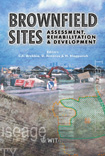Multimedia-modeling Integration Development Environment
Price
Free (open access)
Transaction
Volume
55
Pages
Published
2002
Size
567 kb
Paper DOI
10.2495/BF020321
Copyright
WIT Press
Author(s)
M. A. Pelton & B. L. Hoopes
Abstract
There are many framework systems available; however, the purpose of the framework presented here is to capitalize on the successes of the Framework for Risk Analysis in Multimedia Environmental Systems (FRAMES) and Multi- media Multi-pathway Multi-receptor Risk Assessment (3MRA) methodology as applied to the Hazardous Waste Identification Rule (HWIR) while focusing on the development of software tools to simplify the module developer’s effort of integrating a module into the framework. A module in this plug and play framework can be described as one or more codes, models, or databases that meet the framework communication protocol and can be placed in the visual conceptualization as a discrete part of an analysis. A framework such as this can be used to conceptualize and model the unique scenarios brought about by a Brownfields assessment. In a plug and play system users choose modules without having to worry whether the modules can communicate with each other allowing the user to focus on conceptualization. An Application Programming Interface (API) has been developed for this framework and is implemented as a Dynamic Link Library (DLL), or shared library. The protocol developed for linking modules together is in the form of data dictionaries, which are designed for flexibility. The approach is to focus on developing these protocols (i.e., boundary conditions) between modules using a distributive environment, which allows multiple developers to collaborate on the same boundary conditions between modules in real time. The API is also used for boundary condition input and output (I/O). This enables the developer to consistently access data needed by other modules without the burden of educating their module on multiple file formats, making population of shared- data sources efficient and consistent. System editors are provided to set up the shared-data sources and the information needed to communicate the module’s role in the plug and play system, thus easing the developers work load.
Keywords




